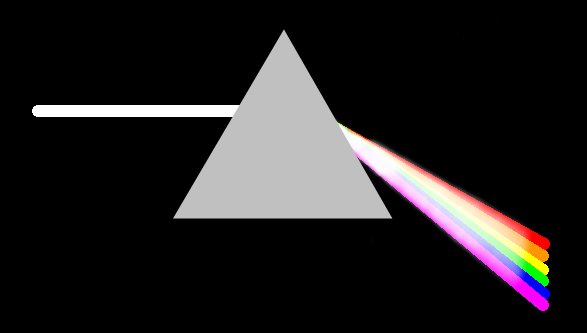Dispersion
Back when we first learned about refraction, I lied to you a little. I said that the index of refraction was a number that describes how much light slows down in a particular transparent material. For example, in the table of index of refraction, I listed the index of refraction for crown glass as 1.52. So in what way did I lie to you? The index varies (changes) slightly, depending on the wavelength of the light. For crown glass, the index is 1.53 for violet light, and drops to 1.51 for red light. In other words, in glass, violet light travels a little bit slower than red light. The index I originally gave you, 1.52, is the average value of the index. Notice that the difference in the index from one end of the visible spectrum to the other end is only 0.02, out of about 1.52, a variation well less than 2%. However, even though the variation in index is small, it has some interesting consequences. If a mixture of different colors (wavelengths) enters some transparent medium, the violet light will get bent more than the red light, with the other colors in between. The colors will be separated from each other, a process called dispersion.
Where do you see dispersion in your everyday life?
- White light that enters a prism gets separated into a spectrum.


- Sunlight entering raindrops is dispersed, creating a rainbow. Read more about rainbows at Les Cowley's excellent Atmospheric Optics website. here. The same website also has an amazing rainbow image gallery.
- Sometimes at night, if there is a bright star close to the horizon, turbulence in the Earth's atmosphere will cause the starlight to twinkle very noticeably and the starlight will be dispersed. The star will appear to change colors rapidly.
Activities & Practice
to do as you read
1. Here's a song about dispersion creating rainbows.